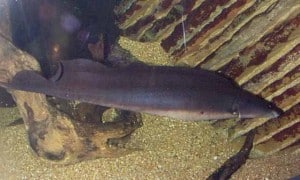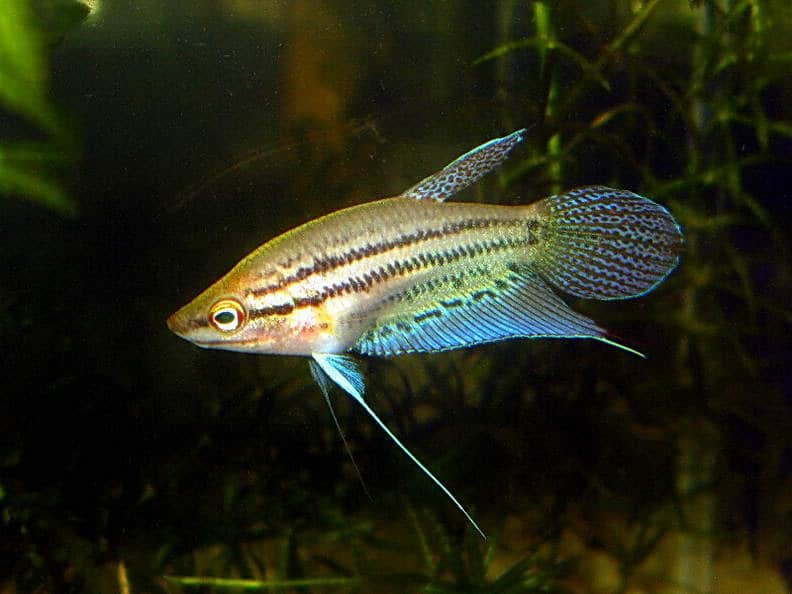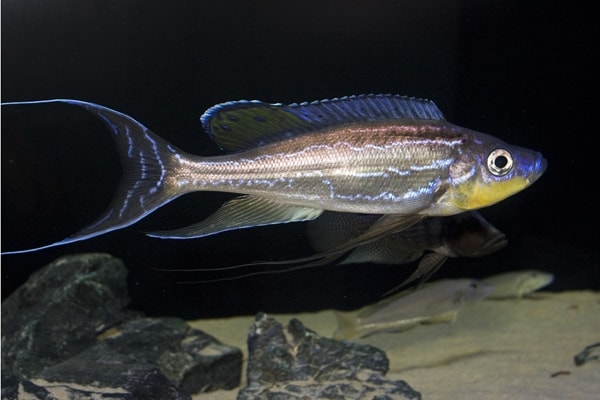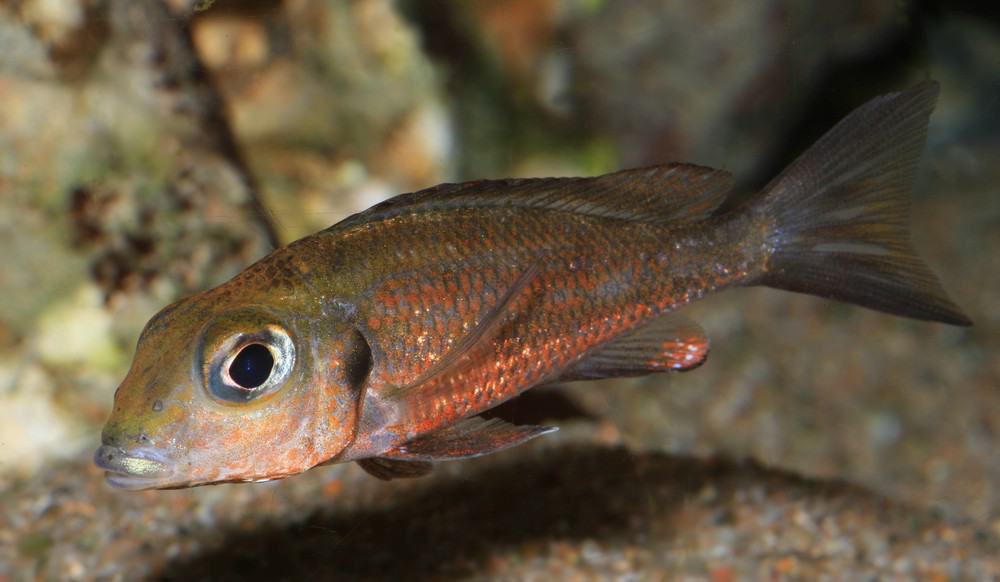Common name: Aba Aba Knifefish, Freshwater Rat-tail, Frankfish, African Knife Fish
Scientific name: Gymnarchus Niloticus
Average Adult Fish Size: Captive specimens of over 48 inches (120cm) are virtually unheard of, but this fish grows to be 5.5 feet / 167 cm in the wild!
Place of Origin: Has a huge natural range, being present throughout much of the northern half of Africa. It’s been recorded in Egypt, Sudan, Kenya, Chad, Cameroon, Nigeria, Niger, Senegal, Benin, Ghana, Sierra Leone, Gambia and Mauritania.
Typical Tank setup: Prefers a dimly lit tank with areas of dense planting, large pieces of driftwood and twisted roots for cover. Any decor must obviously be weighted down securely. Powerful and efficient external filtration is also a must, although any water movement should be kept to a minimum. A sump-type filter is by far the best option, as the fish tends to be very destructive towards any equipment contained within the tank such as heaters and the like.
Recommended Minimum Aquarium Capacity: Juveniles can be kept in aquariums as small as 40 gallon / 160 litre, but eventually this fish will need a very large aquarium of at least 300 gallons / 1200 litres or much larger. Better yet is a tropical pond.
Compatibility: Keep this fish by itself. It can be very aggressive and has a tendency to bite other fish. Be aware that it can also severely bite fingers and submerged body parts!!
Temperature: 73 – 82 Deg F / 23 – 28 Deg C
Water chemistry: pH 6.5 – 8.0
Feeding: Juveniles will eat small fish, brown worms, blood worms, and earthworms, but larger specimens require chunks of fish, shrimp, or mussels. Some may accept chunks of frozen foods and pellets, but don’t count on it.
Sexing: Unknown
Breeding: During the wet season they will migrate to the flooded forests to breed, constructing large, floating nests about 39 inches (1 m) in diameter.
Additional Information: This fish has an electricity producing organ that runs through most of its body to the tip of the tail, generating a very weak electric field. This field helps with a variety of things such as identifying objects in the water, gives it spatial orientation, helps it to navigate, and helps it identify food. Males use an electric ‘stereotyped’ communication to court females. They often live up to 14 years in captivity, but have been known to live for 40 years in the wild. They are sensitive to some fish medications such as copper and those containing formalin. Extreme caution must be exercised when feeding or performing tank maintenance. A bite from even a 2 foot specimen could easily sever a finger!!






This fish has been declared a pest in Australia as it would destroy native fish and other native flora and fauna